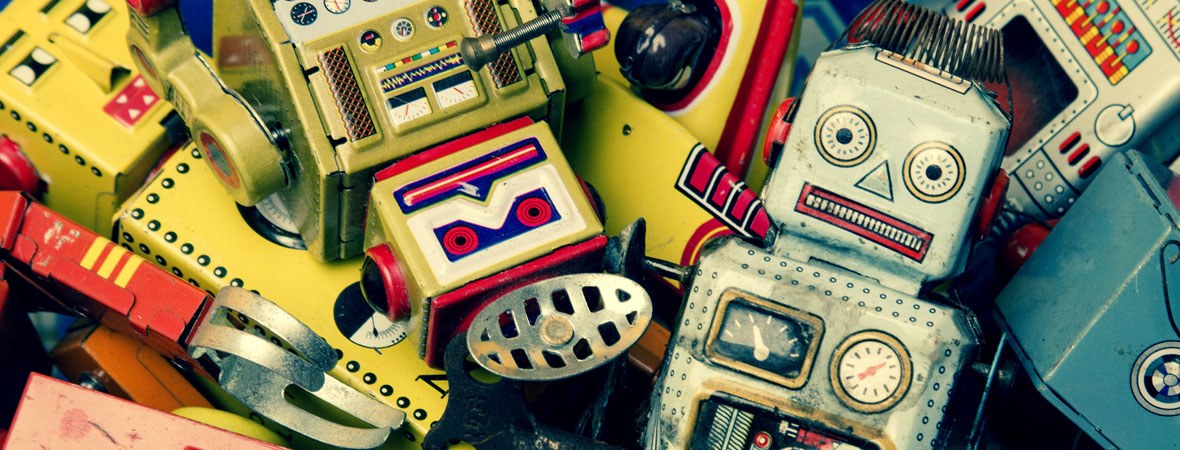
Children learning more with Smart Toys
Smart toys... Just how beneficial are they to our children?
From smartphones to smart watches, smart glasses to smart fridges, the world of technology is becoming incredibly... smart (evolving to an almost human-like form of intelligence, maybe not like consciousness, but who knows?). We’ve indeed taken quite quickly to this rapid progression of technological ability. Just think about how much the modern person relies on her smartphone; we sleep with our smartphones—we eat with our smartphones—we walk and gawk and do all kinds of strange things while using our smartphones. It’s been a smooth and seamless transition into an almost scary codependence that’s proliferated through our human circles faster than you can say Do you remember what a phone booth looks like? .
Well, one smart trend you might not know about is this insurgent wave of smart toy technology.
Toys of the Future
It’s been dubbed the ‘toys to life’ segment, and it can be loosely defined as console or mobile connected toys that bridge the physical-digital divide. Effectively this market is about taking the capabilities of a smartphone and using them in more child-friendly domains, creating toys that in one way or another actively interact with children. Think Siri inside a figurine, playing with a child as if it (the figurine) were a conscious being.
Of course, the above example doesn’t delineate the parameters to which smart toy tech is bound. Indeed, as is the case with all forms of smart technology, this particular sector dedicated to the smaller humans among us is growing fast and catching on all over the place.
A new study from Juniper Research estimated sales of smart toys reached $2.8 billion by the end of 2015, with smart toys that connect to mobile apps and game consoles primarily responsible for this sudden boom. And for those with little humans among us, it appears smart toys are here to stay, with a number of big companies investing in this new and growing market..
Just Who's Leading the Charge
Google and Microsoft are just two names sniffing around the smart toy bush. Google in particular has just patented a form of smart toy tech dubbed by some as just a tad ‘creepy’. The patent suggests that the toys Google plans on developing, mostly teddy and rabbit-shaped machines, will contain cameras and microphones, possessing the ability to record conversations, listen for instructions, connect to household appliances, connect to the Internet, and change facial expressions depending on the task it intends on carrying out. Yep, creepy, anthropomorphic, rabbit-shaped toys are just one of the directions in which we’re headed.
Activision is another company already well established in this area, leading the way after developing a video game that works through real-life figures. It took three years to take their prototype to market; nevertheless, since their toy went live—a toy described as ‘jaw-dropping’—Activision has sold over 250 million units, created over 300 characters, and made over $3 billion in revenue.
In 2016, the likes of Lego, Disney, Nintendo, and Mattel are set to stir up the smart toy playing field as well. Mattel’s well-known Barbie is also becoming interactive, with their latest model boasting the ability to not just speak to kids, but also retain information, understand its meaning, and then bring it up in conversation at a later stage. This function, according to Mattel, is only accessible if the Barbie has a WiFi connection; it stores the content (conversations) on the ToyTalk servers, which, according to Martin Reddy—co-founder and Chief Technical Officer at ToyTalk— are perfectly secure. They have taken steps to ensure that information collected on the servers remains completely safe (as one would hope they have).
Will Smart Toys Kill Creativity?
Unlike much of the new adult tech being developed, this new wave of smart toys bound to have parents questioning whether such technology is good for children. And of course, to this question there is no easy answer. Some will argue that it stifles children’s imaginations by limiting their range of attention to a 2D screen/3D toy; others will argue that these new toys will do the complete opposite and encourage children to think more creatively and critically, that some of the toys will be designed to do just that.
Then there’s the question of playing outside in sand pits and with other children, and whether smart toys will create a generation of robot-dependent… well, robot children—whose lives revolve around interaction with tech rather than interaction with fellow human beings, raising questions of obesity and general health? And others will argue that that’s nonsense, and it’s up to the parents to manage their children’s lives and create some sort of healthy balance between the two.
One thing I think all will agree on is the privacy concerns that toy tech will have to assuage if it is to achieve a level of omnipresence where practically all toys are smart in some way or another. But, only time will tell. This is a new range of technology and the children of today are test dummies. What we know is that it’s here, the market is responsive, it’s growing quickly, and it’s probably here to stay.
